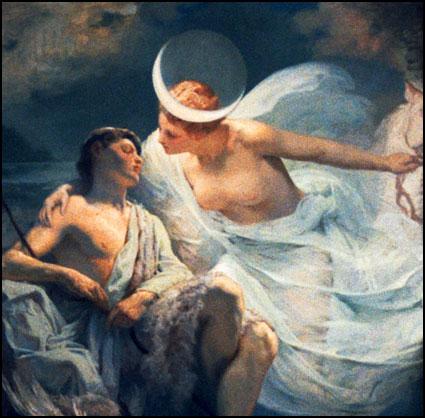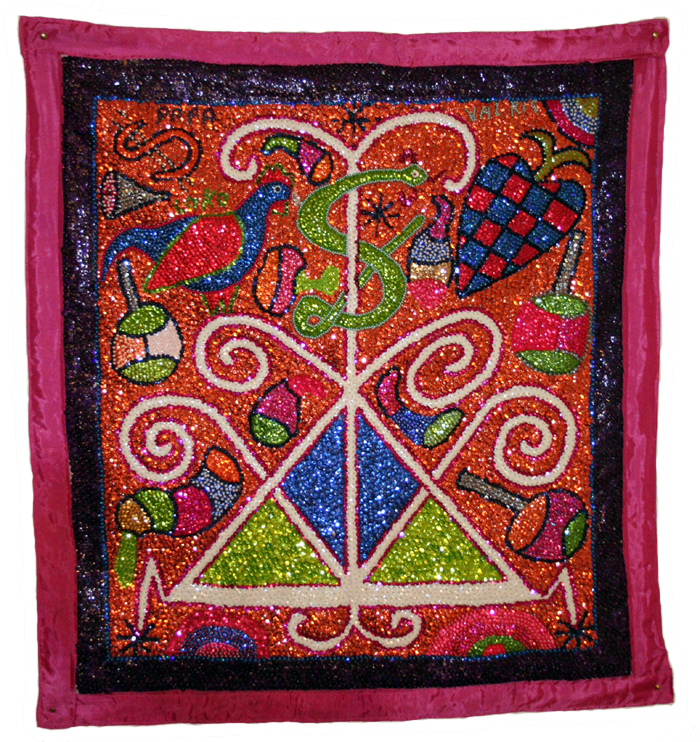|
List Of Lunar Deities
A lunar deity is a deity who represents the Moon, or an aspect of it. Lunar deities and Moon worship can be found throughout most of recorded history in various forms. The following is a list of lunar deities: African American Aztec mythology * Deity Metztli * Goddess Coyolxauhqui * God Tecciztecatl Cahuilla mythology * Goddess Menily Haitian Vodou * God Kalfu Hopi mythology * God Muuya Incan mythology * Goddess Mama Killa * Goddess Ka-Ata-Killa * God Coniraya#Deities, Coniraya Inuit mythology * God Alignak * God Igaluk * God Tarqiup Inua Lakota mythology * Goddess Hanwi Maya mythology * Goddess Awilix; Xbalanque was their mortal (male) incarnation * Maya moon goddess Muisca religion, Muisca mythology * Goddess Huitaca (goddess), Huitaca * Goddess Chía (goddess), Chía Nivaclé Mythology * Jive'cla Pawnee mythology * God Pah Tupi people, Tupi Guarani mythology * God Abaangui * Goddess Arasy * God/Goddess Jaci (mythology), Jaci (gender depends on tribe) Moon gods of ... [...More Info...] [...Related Items...] OR: [Wikipedia] [Google] [Baidu] |
Lunar Deity
A lunar deity or moon deity is a deity who represents the Moon, or an aspect of it. These deities can have a variety of functions and traditions depending upon the culture, but they are often related. Lunar deities and Moon worship can be found throughout most of recorded history in various forms. Moon in religion and mythology Many cultures have implicitly linked the 29.5-day lunar cycle to women's menstrual cycles, as evident in the shared linguistic roots of "menstruation" and "moon" words in multiple Language family, language families. This identification was not universal, as demonstrated by the fact that not all moon deities are female. Still, many well-known mythologies feature moon goddesses, including the Greek goddess Selene, the Roman goddess Luna (mythology), Luna, the Chinese goddess Chang'e, and the Mayan goddess Coyolxauhqu, who's decapitation may represent a lunar eclipse. Several goddesses including Artemis, Hecate, and Isis did not originally have lunar aspec ... [...More Info...] [...Related Items...] OR: [Wikipedia] [Google] [Baidu] |
Khonsu As Falcon
Khonsu (; also transliterated Chonsu, Khensu, Khons, Chons, Khonshu, or Konshu; ) is an ancient Egyptian god of lunar deity, the Moon. His name means 'traveller', and this may relate to the perceived nightly travel of the Moon across the sky. Along with Thoth, he marked the passage of time and is associated with baboons. Khonsu was instrumental in the creation of new life in all living creatures. At Thebes, Egypt, Thebes, he formed part of a family triad (the "Theban Triad") with Mut his mother and Amun his father. Attributes In art of ancient Egypt, art, Khonsu is typically depicted as a mummy with the symbol of childhood, a sidelock of hair, as well as the menat necklace with crook and flail. He has close links to other divine children such as Horus and Shu (Egyptian deity), Shu. He was also portrayed with the head of a falcon and like Horus, with whom he is associated as a protector and healer, adorned with the moon disk and crescent moon.Khonsu is mentioned in the Pyramid ... [...More Info...] [...Related Items...] OR: [Wikipedia] [Google] [Baidu] |
Kalfu
Kalfu (literally '' crossroads)'' is a lwa in Haitian Vodou. He is often envisioned as a young man or as a enigmatic spirit; his color is black or red and he favors rum infused with gunpowder. He is often syncretized with the Shadow A shadow is a dark area on a surface where light from a light source is blocked by an object. In contrast, shade occupies the three-dimensional volume behind an object with light in front of it. The cross-section of a shadow is a two-dimensio .... As his name indicates, he also controls the crossroads and has the power to grant or deny access to all other lwa, or spirits, and he allows the "crossing" with an understanding into the nature of chaos and creation, good and misfortune, and injustices.Corbett, Bob. "Haiti: Short List of Loa." Haiti: Short List of Loa. N.p., n.d. Web. 20 Sept. 2013Webster.edu/ref> Footnotes Notes References Crossroads mythology Fortune gods Liminal gods Magic gods Haitian Vodou gods Lunar gods {{De ... [...More Info...] [...Related Items...] OR: [Wikipedia] [Google] [Baidu] |
Haitian Vodou
Haitian Vodou () is an African diasporic religions, African diasporic religion that developed in Haiti between the 16th and 19th centuries. It arose through a process of syncretism between several traditional religions of West Africa, West and Central Africa and Roman Catholicism. There is no central authority in control of the religion and much diversity exists among practitioners, who are known as Vodouists, Vodouisants, or Serviteurs. Vodou teaches the existence of a transcendent creator divinity, Bondyé, Bondye, under whom are spirits known as . Typically deriving their names and attributes from traditional West and Central African deities, they are equated with Roman Catholic saints. The divide into different groups, the ("nations"), most notably the Rada lwa, Rada and the Petro lwa, Petwo, about whom various myths and stories are told. This theology has been labelled both Monotheism, monotheistic and Polytheism, polytheistic. An initiatory tradition, Vodouists commonly ... [...More Info...] [...Related Items...] OR: [Wikipedia] [Google] [Baidu] |
Cahuilla Mythology
For the Cahuillas, cosmological values and concepts were established when the world was created by Mukat. The Cahuilla creation story tells of the origin of the world, the death of god (Mukat), and the consequences of that death for humans (e.g., the need for death, social roles, and so forth). It also describes the basic concepts of supernatural power and its proper use in the contemporary world. At the beginning of creation, all creatures were said to be much larger than they were today. These were called ''nukatem''. Over time, the nukatem stopped being active and shrank, turning into natural objects such as mirages, rainbows, earth and other things. Deities * Kutya'i – Spirit of wind, mischievous, nocturnal, steals clothing. * Menily – Lunar deity * Mukat – Creator. * Muut – Psychopomp, often depicted as an owl Owls are birds from the order Strigiformes (), which includes over 200 species of mostly solitary and nocturnal birds of prey typified by an upright stance ... [...More Info...] [...Related Items...] OR: [Wikipedia] [Google] [Baidu] |
Metztli
In Aztec mythology, Mētztli (; also rendered Meztli, Metzi, literally "Moon") was a god or goddess of the moon, the night, and farmers. See also *List of lunar deities A lunar deity is a deity who represents the Moon, or an aspect of it. Lunar deities and Moon worship can be found throughout most of recorded history in various forms. The following is a list of lunar deities: African American Aztec mythology * ... References * Esperanza Carrasco Licea & Alberto Carramiñana Alonso, "Metztli, La Luna", Diario Síntesis, 28 de Mayo de 1996 Aztec deities Lunar deities Agricultural deities Night deities {{mesoamerica-myth-stub ... [...More Info...] [...Related Items...] OR: [Wikipedia] [Google] [Baidu] |
Aztec Mythology
Aztec mythology is the body or collection of myths of the Aztec civilization of Central Mexico. The Aztecs were a culture living in central Mexico and much of their mythology is similar to that of other Mesoamerican cultures. According to legend, the various groups who became the Aztecs arrived from the North into the Valley of Mexico, Anahuac valley around Lake Texcoco. The location of this valley and lake of destination is clear – it is the heart of modern Mexico City – but little can be known with certainty about the origin of the Aztec. There are different accounts of their origin. In the myth, the ancestors of the Mexica/Aztec were one of seven groups that came from a place in the north called Aztlan, to make the journey southward, hence their name "Azteca." Other accounts cite their origin in Chicomoztoc, "the place of the seven caves", or at Tamoanchan (the legendary origin of all civilizations). The Mexica/Aztec were said to be guided by their war-god Huitzil ... [...More Info...] [...Related Items...] OR: [Wikipedia] [Google] [Baidu] |
Yoruba Religion
The Yorùbá religion (Yoruba language, Yoruba: Ìṣẹ̀ṣe), West African Orisa (Òrìṣà), or Isese (Ìṣẹ̀ṣe), comprises the traditional religious and spiritual concepts and practice of the Yoruba people. Its homeland is in present-day Southwestern Nigeria and Southern Benin, which comprises the majority of the States of Nigeria, states of; Oyo State, Oyo, Ogun State, Ogun, Osun State, Osun, Ondo State, Ondo, Ekiti State, Ekiti, Kwara State, Kwara, Lagos State, Lagos and parts of Kogi State, Kogi in Nigeria, the Departments of Benin, Departments of; Collines Department, Collines, Ouémé Department, Oueme, Plateau Department, Plateau in Benin, and the adjoining parts of central Togo, commonly known as Yorubaland (). It has become the largest indigenous African tradition / belief system in the world with several million adherents worldwide. It shares some parallels with the Vodun practised by the neighbouring Fon people, Fon and Ewe people, Ewe peoples to its west ... [...More Info...] [...Related Items...] OR: [Wikipedia] [Google] [Baidu] |
Yemọja
Yemọja (also: Yemaja, Yemanjá, Yemoyá, Yemayá; there are many different transliterations in other languages) is the major water spirit from the Yoruba religion. She is the mother of all Orishas. She is also the mother of humanity. She is an orisha, in this case patron spirit of rivers, particularly the Ogun River in Nigeria, and oceans in Cuban and Brazilian orisa religions. She is often syncretized with either Black Madonna, Our Lady of Regla in the Afro-Cuban diaspora or various other Virgin Mary figures of the Catholic Church, a practice that emerged during the era of the Atlantic slave trade, Trans-Atlantic slave trade. Yemọja is said to be motherly and strongly protective, and to care deeply for all her children, comforting them and cleansing them of sorrow. She is said to be able to cure infertility in women, and cowrie shells represent her wealth. She does not easily lose her temper, but when angered she can be quite destructive and violent, as the flood waters of tu ... [...More Info...] [...Related Items...] OR: [Wikipedia] [Google] [Baidu] |
Thoth With Moon-disk
Thoth (from , borrowed from , , the reflex of " eis like the ibis") is an ancient Egyptian deity. In art, he was often depicted as a man with the head of an ibis or a baboon, animals sacred to him. His feminine counterpart was Seshat, and his wife was Maat. He was the god of the Moon, wisdom, knowledge, writing, hieroglyphs, science, magic, art and judgment. Thoth's chief temple was located in the city of Hermopolis ( , Egyptological pronunciation: Khemenu, ). Later known as in Egyptian Arabic, the Temple of Thoth was mostly destroyed before the beginning of the Christian era. Its very large pronaos was still standing in 1826, but was demolished and used as fill for the foundation of a sugar factory by the mid-19th century. Thoth played many vital and prominent roles in Egyptian mythology, such as maintaining the universe, and being one of the two deities (the other being Ma'at) who stood on either side of Ra's solar barque. In the later history of ancient Egypt, Thoth b ... [...More Info...] [...Related Items...] OR: [Wikipedia] [Google] [Baidu] |




